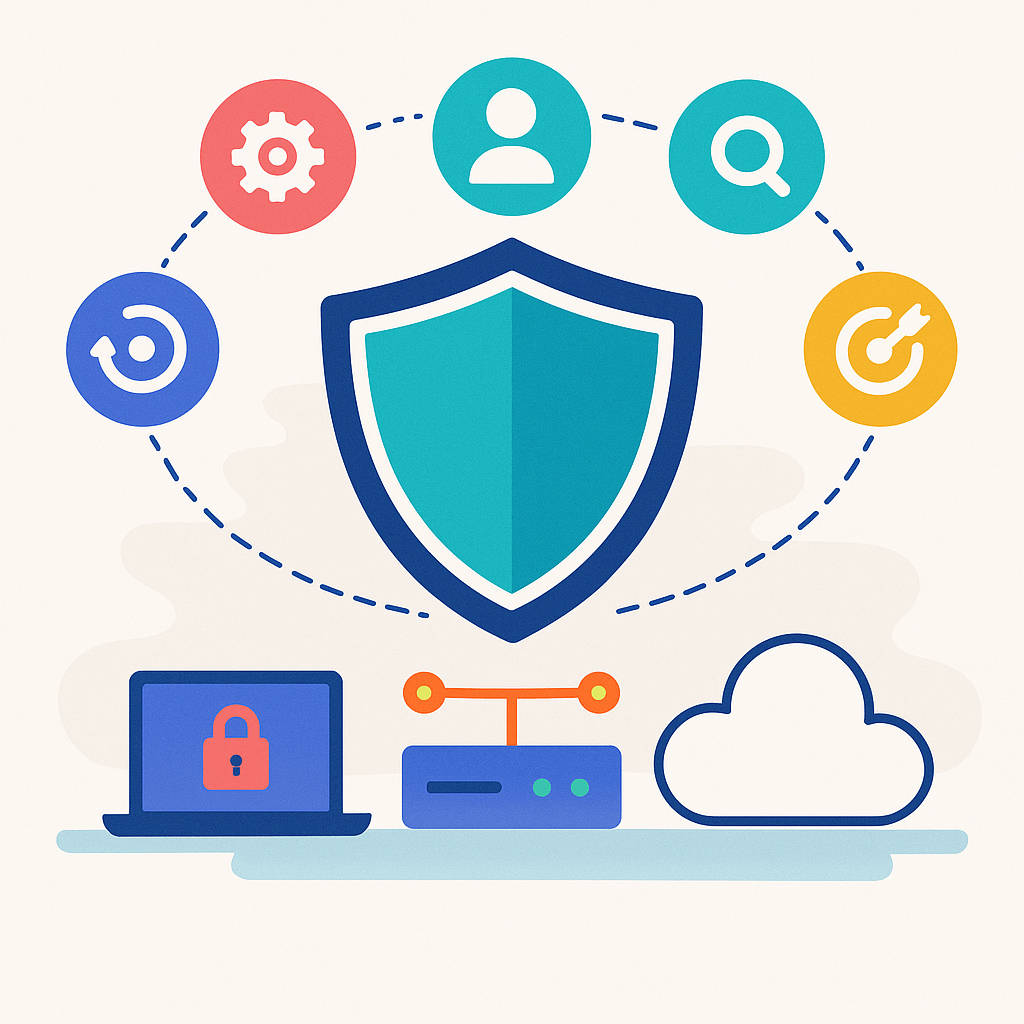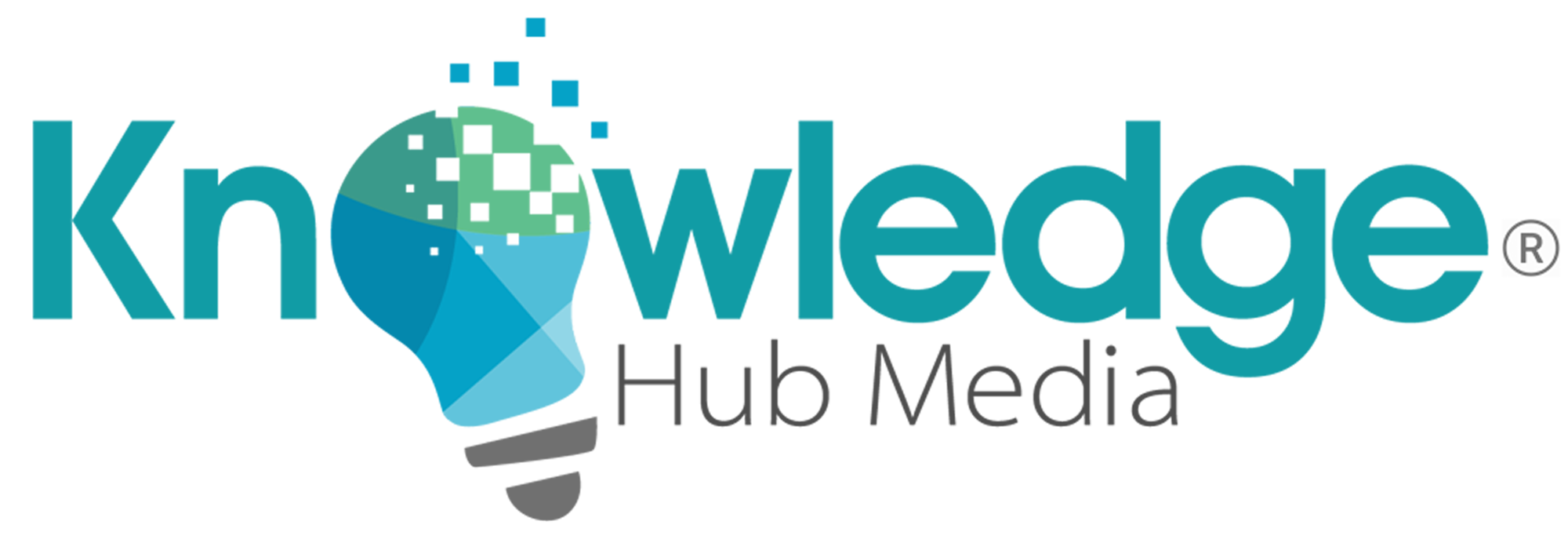
In an age where cybercriminals are as determined as movie villains, modern businesses face security threats that are multiplying in complexity and frequency. From phishing campaigns targeting your newest accounts intern, to sophisticated ransomware attacks orchestrated by nation-state actors, the risks are no longer hypothetical. They’re real, they’re everywhere, and they’re only getting worse!
Yet too many organizations still rely on sluggish, siloed security systems. Threat detection misses subtle attacks, responses move as slow as the opening theme song of an HBO show, and security managers juggle dashboards like a symphony conductor. The result? Higher costs, longer downtimes, and the occasional starring role in headlines about data breaches.
So how do you keep your company from being in the news for all of the wrong reasons? You employ the innovative managed detection and response solution that re-imagines cybersecurity for modern businesses and MSPs. By seamlessly blending state-of-the-art machine learning with the wisdom and vigilance of a global 24/7 Security Operations Center, Field Effect MDR provides continuous, expert-driven monitoring, and real-time threat response. And the best part is that it’s all managed through a single, scalable platform.
In this article, we’ll dive deep into what truly makes Field Effect MDR unique. We’ll then compare it side-by-side with leading competitors, break down proven outcomes, and show why, for organizations serious about cybersecurity, Field Effect isn’t just a good option—it might just be your best option.
- Understanding Field Effect MDR: What Makes It Unique?
- Mastering Threat Detection: Advanced Technology Behind Field Effect MDR
- Rapid and Automated Threat Response with Field Effect MDR
- Simplifying Cybersecurity Management with a Unified, Scalable Platform
- Proven Effectiveness: Real-World Case Studies and Expert Validation
- Comparing Field Effect MDR with Other Leading MDR Solutions
- Conclusion
- References
Understanding Field Effect MDR: What Makes It Unique?
Field Effect MDR stands as a fully managed detection and response platform, blending advanced machine learning, intelligent analytics, and human SOC expertise. But what does this mean for real IT leaders and security teams?
How Field Effect MDR Integrates Machine Learning with Human Expertise

Most MDR solutions boast about AI, but here’s the twist. Field Effect MDR doesn’t just set AI free and wish it luck. Its power comes from the synergy between cutting-edge machine learning and dedicated, human SOC professionals. Think of it as pairing a Formula 1 race car with a world-class driver.
Automated threat detection scours massive datasets and network traffic, flagging anomalies at machine speed. Meanwhile, seasoned analysts—armed with years of cybersecurity experience and caffeine supplies that would alarm most doctors—review, investigate, and appropriately respond to threats. This hybrid approach dramatically reduces false positives and negatives. Machines catch the subtle, stealthy attacks, but humans add context, intuition, and that ineffable “gut check” that no algorithm can replicate.
“With Field Effect MDR, our SOC is yours. As a fully managed service, our experts monitor your environment around the clock, while proactively threat hunting to detect even the most sophisticated cyberattacks. Field Effect MDR instantly isolates attacks on your behalf to stop the spread and shares a full-scale analysis of the attack timeline, threat origins, overall impact, and steps for remediation[1].”
The result? Businesses enjoy a level of real-time protection and actionable insight that’s only possible when AI and human expertise work hand-in-hand—a proven model increasingly recommended by cybersecurity researchers and industry analysts[2].
Scalability and Suitability for Modern Businesses and MSPs
Field Effect MDR isn’t a one-size-fits-all t-shirt. Whether you’re a growing SMB, a multinational organization, or an MSP managing multiple client environments, the platform’s flexible packages and policies can scale with you, without losing effectiveness or blowing your budget.
A single, unified dashboard slashes management complexity. Security teams see everything—endpoint, network, cloud, even IoT devices—at a glance, enabling instant triage and strategic oversight, versus the scattered data of a dozen disconnected tools[2]. MSPs benefit from granular client management capabilities and transparent reporting, adding both to their value offering and their clients’ peace of mind.
As spotlighted in real-world MSP deployments, “Field Effect MDR bundles advanced analytics and global SOC capabilities, offering 24/7/365 monitoring to protect network, endpoint, and cloud layers. Flexible package designs tailor security to various business needs[2].”
Mastering Threat Detection: Advanced Technology Behind Field Effect MDR

Threat detection is the beating heart of cybersecurity: the ability to find threats early, before they become headlines or audit nightmares. It’s the combination of processes and tools for identifying malicious activity, distinguishing subtle attacks from ordinary network traffic, and delivering real-time alerts that matter (not the “cry wolf” avalanche of false positives).
The NIST Data Breach Response Guide, and the MITRE ATT&CK Framework Overview both outline gold-standard frameworks for detection excellence. The implication of course being that not all detection technologies are created equal.
Field Effect MDR uses a blend of advanced behavioral analytics, machine-learning-driven monitoring, and expert threat hunting that not only detects, but anticipates and adapts to new attack vectors[2].
In 2025, that’s exactly what threat detection needs to be. Real-time, proactive, and always evolving.
Types of Threat Detection Technologies and Their Roles
So, what makes advanced detection… well, advanced? Field Effect MDR leverages several interlocking technologies, each playing a vital role:
- Behavioral Analytics: Analyzes user and entity behavior to spot anomalies, like an employee logging in from both Paris and Peoria simultaneously. This is crucial for catching insider threats and subtle attacks that legacy systems miss.
- Signature-Based Detection: Like a virus scanner, it matches known threat signatures, but is rapidly outpaced by today’s evolving attacks.
- Anomaly Detection: Flags behaviors that deviate from the norm, such as a sudden spike in outbound traffic at 3 AM. With Field Effect MDR, machine learning constantly adjusts baselines for more accurate detection.
- Sandboxing: Suspicious files or communications are run in isolated environments to observe behavior without risking real assets, ensuring threats are identified safely.
- Threat Hunting: Going beyond alerts, Field Effect MDR’s SOC team actively investigates remote corners of your environment, hunting for threats before alarms even sound.
Technical whitepapers by Field Effect and independent analysts emphasize that combining these methods—rather than relying on any single approach—delivers the highest probability of catching real-world threats while suppressing noise[2].
Addressing Ineffective Threat Detection: How Field Effect MDR Excels
Ineffective threat detection is about as useful as a lock on a screen door. Common causes include limited visibility (monitoring only 1% of network data is like reading the first page of a book and thinking you know the whole story), outdated rules, and alert fatigue.
Field Effect MDR addresses these head-on. It provides comprehensive visibility across endpoints, networks, and cloud resources. It issues constant updates to detection rules driven by global intelligence. It offers deep data collection, storing 90+ days of logs for trend analysis and compliance audits. It includes human SOC oversight to “sanity check” automated findings, and fine-tune rules reduce both false alarms and missed threats.
Independent user reviews affirm these improvements: “Our detection rates improved from under 60% to more than 90% within months of deployment, and actionable alerts increased significantly—allowing our team to focus on what matters most[3].” Empirical analyses from IT Pro and Picus Security further underscore the dangers of lackluster detection, and the tangible uplift delivered by expert-driven MDR[4][5].
Rapid and Automated Threat Response with Field Effect MDR

Detection is just the first act. Rapid response is the showstopper. In cybersecurity, time isn’t just money—it’s everything. The difference between breach containment and business disaster is often measured in minutes.
Field Effect MDR combines automated attack isolation, expert intervention, and real-time reporting to neutralize threats before they escalate. This is where robots and humans truly shine together—automation acts instantly, and experts handle the curveballs.
Best practices from NIST and frameworks such as the NIST Incident Response Guide stress the urgency of swift, coordinated responses. Field Effect aligns with—and in many ways exceeds—these leading recommendations.
Why Quick Threat Response Is Crucial for Modern Businesses
Slow threat response is the silent killer in cybersecurity. When attackers are given time, they escalate privileges, exfiltrate data, and cover their tracks. Financial losses mount, and investigations get harder.
Studies show that AI-powered response solutions routinely reduce median response times to under 20 minutes—compared to hours with traditional, manual-only workflows[6]. Frameworks like CrowdStrike’s 1/10/60 set benchmarks: detect within 1 minute, investigate in 10, contain in 60. Every minute shaved off the response clock lowers breach impact and business risk.
“Rapid automation of incident detection and containment doesn’t just reduce risk—it transforms cybersecurity from a defensive necessity into a strategic business enabler[7].”
In other words, if you snooze, you really do lose.
Field Effect MDR’s Automated and Expert-Driven Response Capabilities
What does Field Effect MDR do when trouble surfaces? Instantly quarantine compromised assets, block malicious traffic, and kick off deep forensics—all before you’ve even refreshed your inbox.
As their SOC team puts it, Field Effect MDR “instantly isolates attacks on your behalf to stop the spread, and shares a full-scale analysis of the attack timeline, threat origins, overall impact, and steps for remediation[1].” Clients receive clear guidance, actionable steps, and expert support around the clock.
Simplifying Cybersecurity Management with a Unified, Scalable Platform
If you’ve ever wished you could replace a hodgepodge of disconnected tools with one cohesive platform—without sacrificing functionality or control—Field Effect MDR was made with you in mind.

The platform consolidates endpoint, network, and cloud security management into a single intuitive dashboard. This is more than a convenience, it dramatically reduces operational complexity, minimizes human error, and accelerates triage and response.
Testimonials from MSPs and enterprises alike underscore the time savings: “Our team was managing five different tools before Field Effect MDR; now everything—including multi-client reporting and compliance—happens through one dashboard. It’s like upgrading from a flip phone to a smartphone. Just as transformative, but you won’t miss T9 texting[2].”
For further insights into best practices managing unified MDR platforms, the SANS MDR Best Practices Report is well worth a read.
Eliminating Tool Complexity: Single Dashboard Benefits
Switching between dashboards is a productivity killer. With Field Effect MDR, one pane of glass delivers centralized visibility of threats across all environments, unified alert management and incident review, and integrated reporting for compliance and executive summaries.
Field Effect’s platform overview says it best: “Field Effect MDR is available in flexible packages to suit businesses of varying size, complexity, and cybersecurity requirements—all managed through one simplified dashboard to streamline operations[2].” Independent user reviews praise the operational efficiencies and reduced learning curve, helping staff focus on high-value activities rather than detective work among disparate tools[3].
Scalable Packages Designed for Businesses and MSPs
As organizations evolve, so do their security needs—and their compliance obligations. Field Effect MDR’s flexible packaging makes it easy to scale protection up or down, support multi-site operations, or onboard MSP clients without starting from scratch.
Packages include robust compliance support for frameworks like MITRE ATT&CK and NIST, 90+ days of log retention, and tailored reporting. MSP partners, in particular, enjoy seamless client onboarding, advanced billing features, and the ability to deliver “white glove” MDR-as-a-service, all while providing world-class protection[2].
Expert testimonials routinely highlight Field Effect’s package flexibility: “Our MSP clients require different levels of visibility and control, and Field Effect MDR tailors solutions without the prohibitive cost or complexity of other MDR tools. It’s a major win for us and our customers[2].”
Proven Effectiveness: Real-World Case Studies and Expert Validation
Marketing claims are one thing; independent results are another. Field Effect MDR has both.
Independent User Reviews and Satisfaction Scores
Numbers speak volumes, especially when they come from hundreds of real users, not vendor slideshows. As compiled by SoftwareReviews[3]:
- 95% Business Value Created (vs. industry average 85%)
- 95% Real-Time Threat & Anomaly Detection
- 93% Usability Score
- 97% MITRE ATT&CK Framework Implementation
- 95% 24/7/365 Monitoring
- 94% Proactive Threat Hunting & Incident Management
Third-party reviews echo these scores, highlighting actionable alerts, rapid onboarding, and superior vendor support.
Expert Testimonials and Industry Analyst Perspectives

Analyst and professional feedback reinforce the technical accomplishments. Cybersecurity professionals praise Field Effect MDR’s fusion of automation and human intelligence: “Combining advanced behavioral analytics with hands-on incident response is exactly how modern businesses should approach cyber risk—a true force multiplier[2].”
Industry analysts frequently highlight the platform’s alignment with modern frameworks, along with the transparent reporting that streamlines audits and compliance for organizations of all sizes[3].
For broader perspective, the NIST Incident Response Guide, and the MITRE ATT&CK Framework Overview reaffirm the essential frameworks underpinning MDR strategies like those championed by Field Effect.
Comparing Field Effect MDR with Other Leading MDR Solutions
How does Field Effect MDR fare against its most prominent competitors? In one word: decisively.
Competitor analysis shows that while many vendors tout comparable features—24/7 monitoring, “AI-powered detection,” and incident response—the devil (or cybercriminal) is in the details. Sangfor, Rapid7, SentinelOne, Sophos, and ReliaQuest, for example, often provide broad overviews, but lack the deep integration of AI and SOC expertise, unified platform management, or the empirically validated client outcomes that define Field Effect MDR.
Key Differentiators: Why Field Effect MDR Stands Out
A quick scan of competitor content uncovers recurring gaps. Superficial AI capabilities, missing real-world case studies, fragmented dashboards, and limited scalability for MSPs or rapidly changing businesses[8][9][10][11][12].
And perhaps the most compelling differentiator? Field Effect MDR backs every claim with transparent data, analyst endorsements, and glowing user experiences, earning trust—and business—where it matters most.
Summary Table of Features and Benefits
| Feature / Benefit | Field Effect MDR | Competitors* |
|---|---|---|
| Detection Accuracy (Real-Time/AI+Human) | 95%+ (top industry ranking) | Lower, often lacks continuous human review |
| Unified Dashboard | Single-pane, endpoint/network/cloud | Multiple dashboards; fragmented visibility |
| Rapid Response Automation | Yes, auto-isolation + expert review | Often automation OR human, not both seamlessly |
| MITRE ATT&CK Framework Compliance | 97% implementation score | Lower or not independently verified |
| Usability/Simplicity | 93% (top score) | 70-85% (average) |
| Scalability for SMBs/MSPs | Flexible packages + MSP support | Often rigid pricing and limited MSP features |
| Third-Party Validation | Yes (SoftwareReviews, Info-Tech RG) | Often vendor-claimed; less independent validation |
| 24/7/365 Monitoring | Included in all plans | Sometimes an upsell |
*Competitors referenced: Sangfor, Rapid7, SentinelOne, Sophos, ReliaQuest, and others cited in leading comparison reports[8][9][10][11][12].*
Conclusion
Today’s cybersecurity landscape demands more than “good enough.” Organizations need detection and response tools that are fast, accurate, scalable, and—let’s be honest—don’t require a PhD to operate.
Field Effect rises to this challenge by combining advanced machine learning with always-on expert oversight, unifying visibility across every corner of your environment, and delivering rapid, automated responses guided by world-class SOC teams. The result is lower risk, simpler management, measurable outcomes—and, perhaps finally, a good night’s sleep.
From independent analyst validation to real-world user accolades, Field Effect proves it’s not just another checkbox in your security stack, it’s the key differentiator in your cyber defense. For IT decision-makers and cybersecurity pros ready to break free from legacy limits and truly master threat detection and response, you would be remiss not to strongly consider Field Effect MDR.
References
- Field Effect Software Inc. (N.D.). Managed Cybersecurity – Field Effect. Retrieved from https://fieldeffect.com/products/mdr/managed-cyber-security
- Field Effect Software Inc. (N.D.). Field Effect MDR – All-in-one. Retrieved from https://fieldeffect.com/products/mdr/all-in-one
- Field Effect Software Inc. (2024). Field Effect MDR tops the 2024 MDR Data Quadrant. SoftwareReviews (Info-Tech Research Group). Retrieved from https://fieldeffect.com/blog/field-effect-mdr-tops-the-2024-mdr-data-quadrant
- IT Pro Editorial Staff. (N.D.). Three reasons why cyber threat detection is still ineffective. IT Pro. Retrieved from https://www.itpro.com/security/29061/three-reasons-why-cyber-threat-detection-is-still-ineffective
- Picus Security. (N.D.). Why detection rules fail. Picus Security Blog. Retrieved from https://www.picussecurity.com/resource/blog/why-detection-rules-fail
- Dropzone AI. (2023). How AI SOC analysts cut threat response time to 20 minutes. Dropzone AI Blog. Retrieved from https://www.dropzone.ai/blog/how-ai-soc-analysts-cut-threat-response-time-to-20-minutes
- Cyware Editorial Team. (N.D.). Don’t let data or team silos slow down your threat response. Cyware. Retrieved from https://www.cyware.com/blog/dont-let-data-or-team-silos-slow-down-your-threat-response-dfe2
- Sangfor Technologies. (2025). 15 Best Managed Detection and Response (MDR) Solutions. Retrieved from https://www.sangfor.com/blog/cybersecurity/15-best-managed-detection-and-response-mdr-solutions
- eSecurityPlanet Staff. (2025). Top 6 Managed Detection & Response (MDR) Providers. eSecurityPlanet. Retrieved from https://www.esecurityplanet.com/products/top-mdr-solutions/
- Channel Insider Editorial Staff. (2025). Best Managed Detection and Response (MDR) Tools for 2025. ChannelInsider. Retrieved from https://www.channelinsider.com/security/mdr-services/
- Info-Tech Research Group. (2024). MDR Data Quadrant Report. Info-Tech. Retrieved from https://www.infotech.com/software-reviews/categories/managed-detection-response
- SANS Institute. (2023). 2023 Report: The State of MDR – SANS Institute. Retrieved from https://www.sans.org/webcasts/2023-sans-report-the-state-of-mdr/
